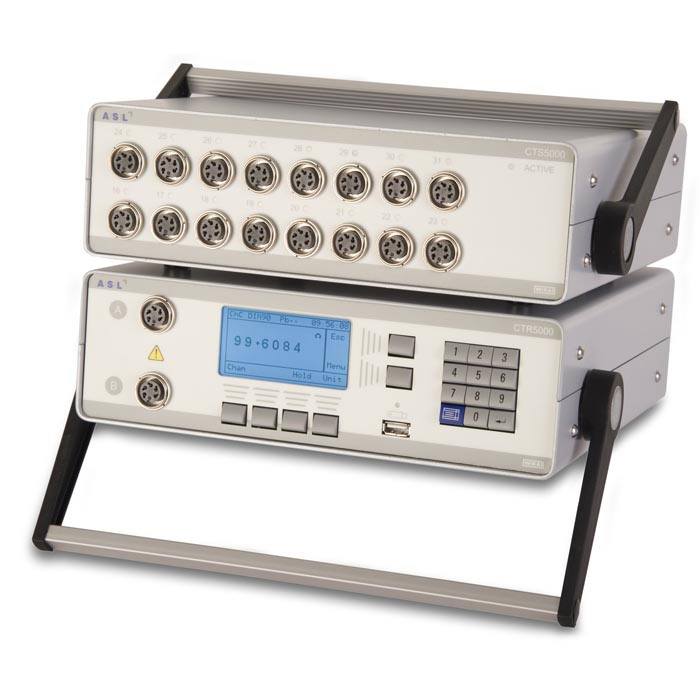CTR5000 Precision Thermometer

Application of precision thermometers
Precise measurement -200 ... +962 °C range of temperature
Reference gauges for testing, conditioning, and calibrating temperature measuring instruments in factory and calibration laboratories
Complete stand-alone system, also for on-site measurement/calibration work
Functional characteristics of precision thermometers
Temperature range: -200 ... +962 °C
Stability: 0.01 ° C and 0.005 ° C (optional)
Standard dual channel, optional 4 or 6 channels
Using a multiplexer to expand to 64 channels
SMART probe check and editor
Description of precision thermometers
CTR5000 precision thermometer comes standard with dual channels, also available with 4 and 6 channels, each channel can use up to 70 user-defined probes to support field calibration.
This model has three measurement modes: single, differential and alternating, which can be used directly for comparison calibration. In addition, this model thermometer also has a data logging function that scans the channels sequentially or sends the measurement data to a computer or USB flash drive.
When using a calibrated probe on a precision thermometer, you can choose to save the calibration data to the meter's memory; when using the ASL SMART probe, you can enter the data directly into the probe.
Users can also check and edit the data in the SMART probe, so the calibration can be easily done using the ASL SMAT probe. The meter also automatically calculates the coefficients based on the reference temperature/resistance data set.
The measurement range of this type of precision thermometer meets the requirements of ITS 90, CVD, EN 60751 and IEC 751, and displays (statistical or graphical information) measurement results through a large digital LCD display with backlight . In addition, this model comes standard with a USB interface and is also available with RS-232, IEEE or LAN interfaces.
To ensure long-term stability, precision thermometers use surface mount technology, eliminating the need for any mechanical relays or potentiometers.

